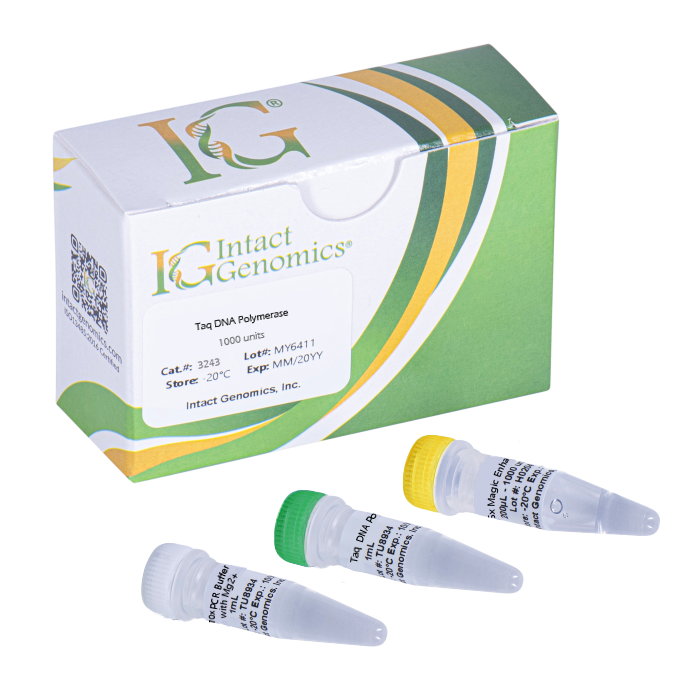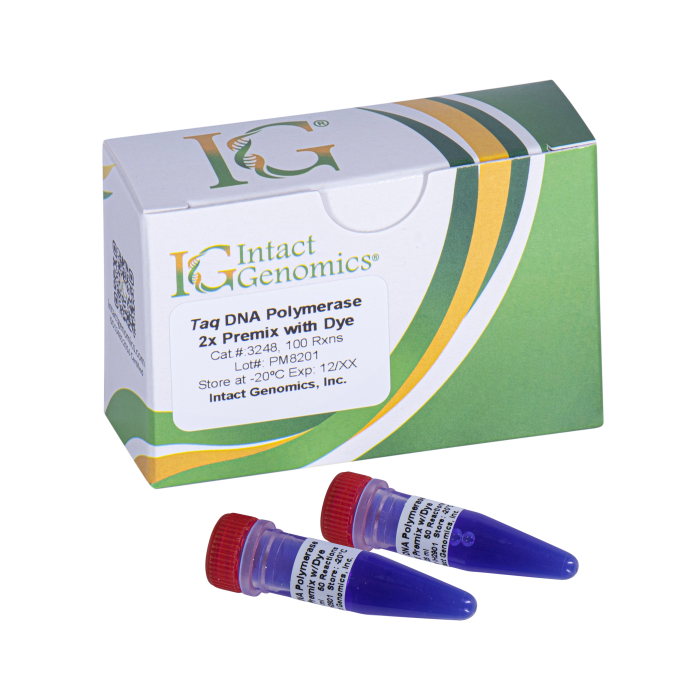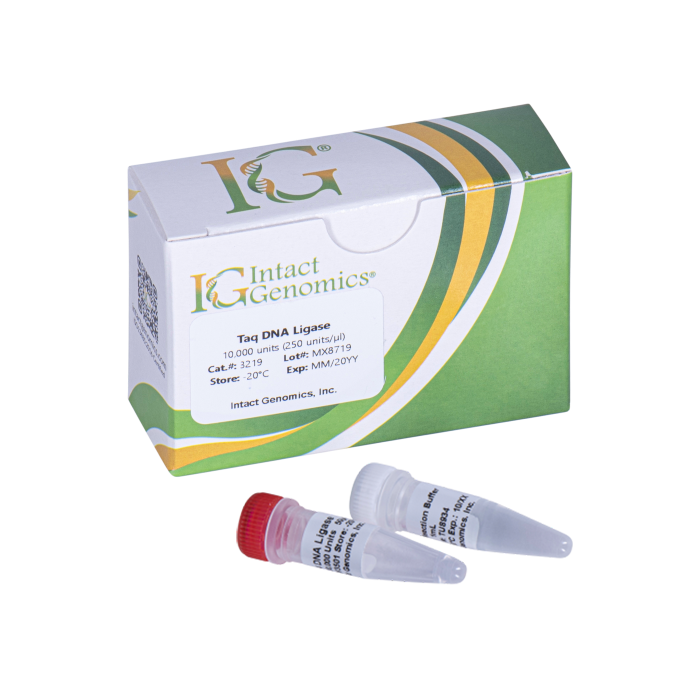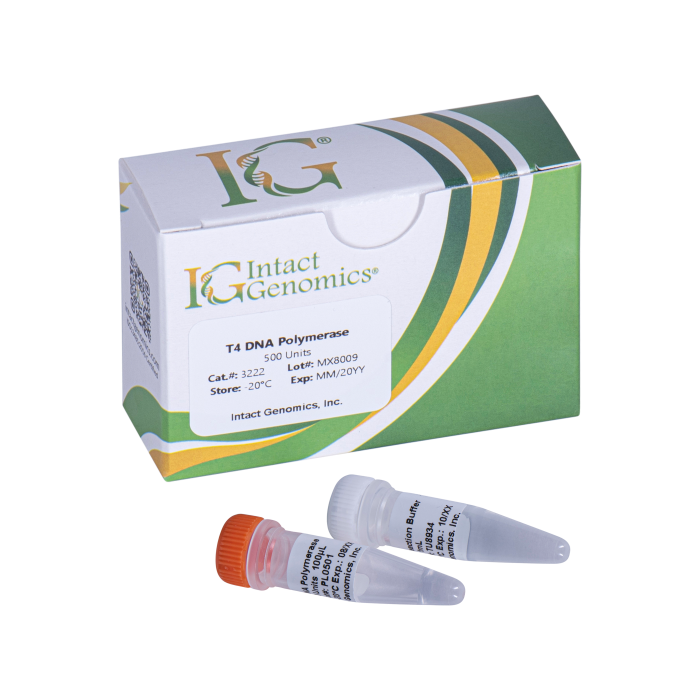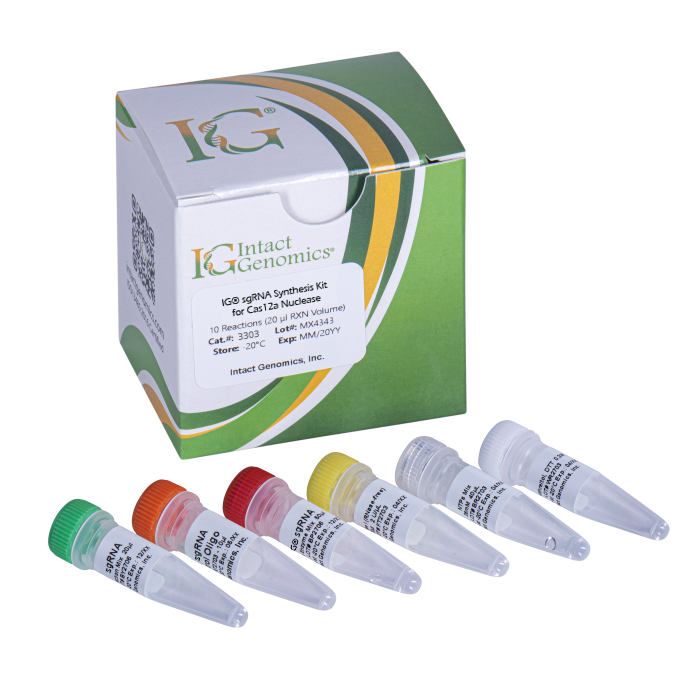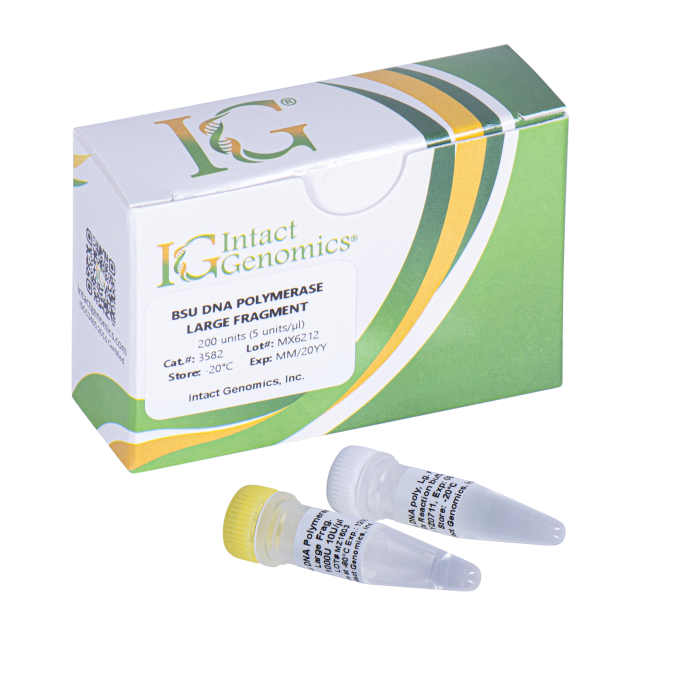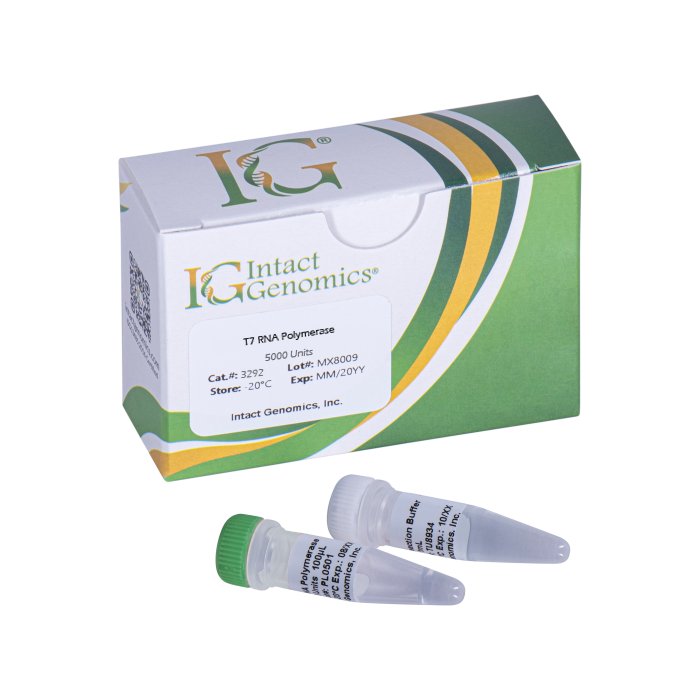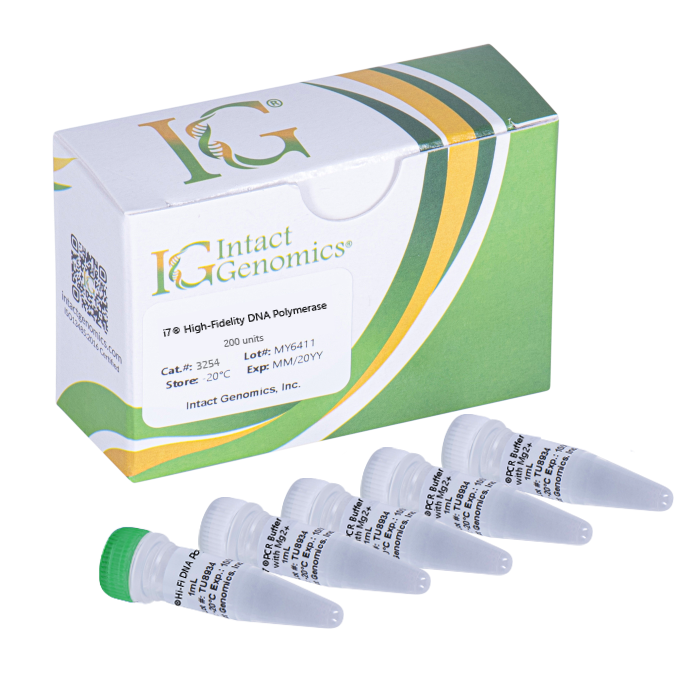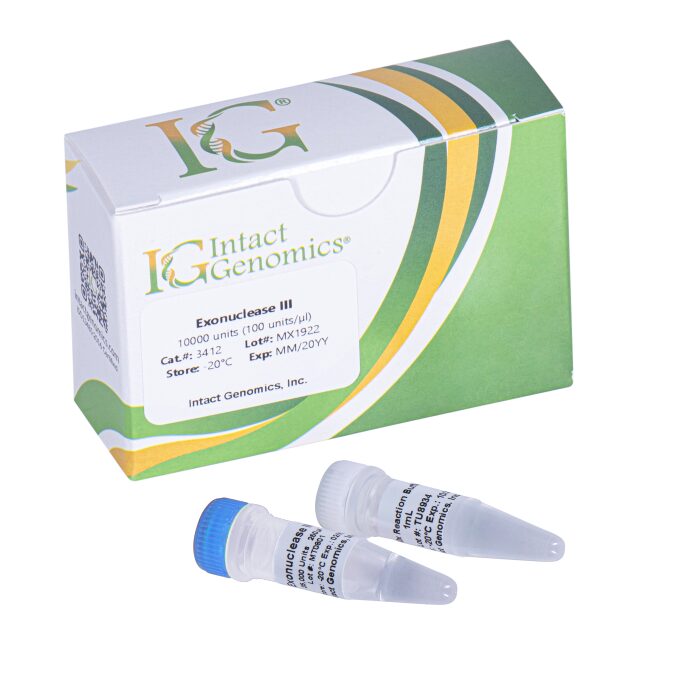Description
T4 Polynucleotide Kinase (PNK) catalyzes the transfer of the γ-phosphate from ATP to the 5’-OH group of single- and double-stranded DNAs and RNAs, oligonucleotides or nucleoside 3’-monophosphates. In the presence of ADP, T4 PNK exhibits 5’-phosphatase activity and catalyzes the exchange of phosphate group between 5’-P-oligonucleotides/polynucleotides and ATP (1). The enzyme is also a 3’-phosphatase (2).
The purity of this enzyme is >98% homogeneity as determined by SDS-PAGE using Coomassie® Blue staining.
Product Source
E. coli cells with a cloned pseT gene of bacteriophage T4.
Applications
- Labeling 5′-termini of nucleic acids (3, 4)
- 5′-phosphorylation of oligonucleotides, PCR products, other DNA or RNA prior to ligation.
- Phosphorylation of PCR primers.
- Detection of DNA modification by the [32P]-postlabeling assay (5, 6).
- Removal of 3′-phosphate groups (2).
Includes
- T4 Polynucleotide Kinase (PNK)
- 10X T4 PNK Reaction Buffer
Storage Temperature
–20 °C
Storage Buffer
50 mM Tris-HCl, 50 mM KCl, 1 mM DTT, 0.1 mM EDTA,
50% Glycerol, pH 7.5 @ 25 ºC
10X T4 PNK Reaction Buffer
500 mM Tris-HCl, 100 mM MgCl2, 50 mM dithiothreitol, pH 7.5 @ 25 °C
Note
T4 PNK requires ATP for activity, but it is not supplied with ATP because it interferes with radiolabeling reactions.
Unit Definition
One unit of T4 Polynucleotide Kinase converts 1 nmol of 32P from [γ-32P]-ATP into an acid-insoluble form in 30 minutes at 37 °C under standard assay conditions.
Inhibition and Inactivation
- Inhibitors: metal chelators, phosphate and ammonium ions, KCl and NaCl at a concentration higher than 50 mM.
- Inactivated by heating at 70°C for 15 min or by addition of EDTA.
Quality Control Assays
T4 PNK is tested in 5´ phosphorylation of nucleic acids and is free from exo- and endonuclease and RNase activities.3231 3232


